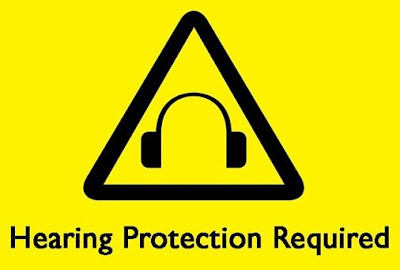Hearing Protection Safety:
Why It Matters
Hearing Protection Safety: Why It Matters
Noise-Induced
Hearing Loss(NIHL) is a common problem in many industries workers, including
construction, manufacturing, and agriculture. The World Health Organization
(WHO) estimates that approximately 1.1 billion young people are at risk of
developing hearing loss due to exposure to loud noises. We all agree hearing
protection is crucial to prevent this, yet many workers fail to use it
properly, or don't use it at all even they aware of the impact. In this
article, we'll discuss the importance of hearing protection and provide tips
for ensuring that it is used effectively.
Why Hearing Protection is Important
Hearing is Communication - Hearing is a critical sense that enables us to interact with our environment and communicate with others. Without hearing employees cannot communicate and enjoy his personal happiness. Noise-induced hearing loss can cause a range of problems, including difficulty hearing conversations, tinnitus (ringing in the ears), and a decreased ability to enjoy music or other sounds. In severe cases for a prolonged extreme exposure, it can lead to complete deafness.
In
addition to these personal effects, hearing loss can also have a significant
impact on a person's career and financial stability. Employees with hearing
loss may have trouble performing their job duties, leading to decreased
productivity and even job loss. Incase of emergency communication in the
workplace if its not able to hear by the employee having NIHL which may lead to
risk of his safety. Furthermore, they may also face increased healthcare costs
due to the need for hearing aids or other treatments.
Effective Hearing Protection
There are several steps that companies can take to ensure that their workers use hearing protection effectively:
Educating Employees: Employees must be informed of the risks of noise-induced hearing loss and the importance of using hearing protection. This can be achieved through regular training sessions and informational posters or brochures. Specific workplace campaign can be done to increase more awareness on the topic.
Availability
of Hearing PPE – Personal Protective Equipment: Hearing protection should be
readily available to all employees who need it. This includes earplugs and
earmuffs. Suitable hearing protection with respective to the noise level to be
provided to the employees. Companies should also provide several different
types of hearing protection so that workers can choose the one that is most
comfortable for them.
Comfort of Wearing Hearing PPE: Hearing protection must be comfortable to wear for extended periods. If workers find it uncomfortable, they are less likely to wear it. Companies should encourage workers to try different types of hearing protection until they find the one that is most comfortable for them.
Proper Fitness of Hearing Protection: It is important that hearing protection fits properly to be effective. Employees should be shown how to insert earplugs properly and adjust earmuffs so that they provide the maximum level of protection. The fitness test to be conducted.
Regular
Monitoring of Hearing Protection & Hearing Loss: Companies should regularly
monitor the use of hearing protection to ensure that workers are using it
correctly. This can be done through regular hearing tests (Audiometry) or by
observing workers on the job.
Conclusion
Hearing protection is an essential component of a safe and healthy work environment. By providing workers with the education, equipment, and support they need, companies can help prevent noise-induced hearing loss and ensure that their workers can enjoy good hearing for years to come.
Hearing protection is an important aspect of workplace safety that
should not be ignored. Companies should take the necessary steps to ensure that
their workers use hearing protection effectively, including providing
education, making it readily available, ensuring comfort, providing proper fit,
and monitoring its use. By doing so, they can help protect their workers'
hearing and reduce the risk of noise-induced hearing loss.

No comments:
Post a Comment